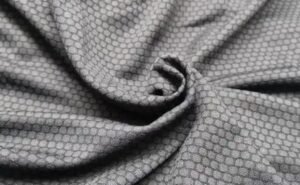Creating your own clothing brand is a journey that melds creativity with business acumen. As Julie Chen, the owner of Natural Touch Fashion Co., Ltd., I have witnessed the birth and growth of numerous brands through our OEM and ODM services. Here, I’ll share insights to guide you through this exciting process.

Step 1: Conceptualizing Your Brand
Understanding Your Niche: Every successful clothing brand starts with a clear concept. Whether you’re aiming for high fashion, streetwear, sustainable clothing, or activewear, understanding your niche is crucial. Research current trends, but also think about timeless designs.
Brand Identity and Storytelling: Your brand should tell a story. What are your brand’s values, mission, and unique selling propositions? For instance, our clients often focus on sustainability and ethical production, which resonates well with today’s consumers.
Step 2: Market Research
Identifying Your Target Audience: Who are you designing for? Creating buyer personas can help you understand your audience’s preferences, lifestyle, and buying behavior.
Competitor Analysis: Study your competitors. What are they doing well? Where do they fall short? This information will help you position your brand effectively.
Step 3: Designing Your Collection
Creating Your Designs: Start with a few key pieces that represent your brand’s essence. As an OEM provider, we work with many start-ups to refine their initial designs into something manufacturable and appealing to their target market.
Selecting Fabrics and Materials: The choice of materials can make or break your collection. Consider quality, sustainability, and cost. We, at Natural Touch, offer a range of materials from organic cotton to recycled polyester, providing options for various brand philosophies.
Step 4: Branding and Marketing
Developing a Strong Brand Identity: Your logo, website design, and overall aesthetic should reflect your brand’s personality. Work with professional designers to ensure consistency across all platforms.
Marketing Strategy: Utilize social media, influencer partnerships, and content marketing. Share your story and connect with your audience on a personal level. Remember, it’s not just about selling products, but building a community around your brand.
Step 5: Production
Choosing the Right Manufacturer: This is crucial. Look for manufacturers with experience in your niche. Consider factors like production capacity, quality control, and ethical practices. We pride ourselves on our transparent production process and consistent quality control.
Sampling and Prototyping: Before mass production, develop samples. This step helps iron out any design or production issues. We often advise our clients to invest time in this phase to avoid costly mistakes later.
Step 6: Pricing and Budgeting
Cost Analysis: Understand the costs involved in production, shipping, marketing, and other overheads. Price your products competitively, but ensure you maintain a healthy profit margin.
Budgeting: Be realistic with your budget. Many new brands fail due to underestimating costs. Plan for contingencies and unexpected expenses.
Step 7: Building an Online Presence
E-commerce Platform: In today’s digital age, an online presence is essential. Platforms like Shopify or WooCommerce can be great starting points.
Digital Marketing: SEO, email marketing, and social media advertising are powerful tools to increase brand visibility and sales.
Step 8: Sales and Distribution
Choosing Sales Channels: Apart from online sales, consider other channels like pop-up stores, fashion markets, or wholesaling to boutiques.
Inventory Management: Balance between having enough stock to meet demand and not overproducing. Implement a good inventory management system to track your stock levels.
Step 9: Customer Service and Feedback
Building Customer Relationships: Excellent customer service can set you apart. Be responsive to customer inquiries and feedback.
Iterative Improvement: Use customer feedback to improve your products and services. Continuous improvement is key to long-term success.
Step 10: Scaling Your Brand
Expanding Your Collection: Gradually expand your product line. Pay attention to what sells well and what your customers are asking for.
Exploring New Markets: Consider expanding to new markets. As an exporter to Europe, the United States, and Australia, I’ve seen brands thrive by tapping into international markets.
Conclusion
Starting your own clothing brand is a complex but rewarding endeavor. It requires a balance of creativity, strategic planning, and perseverance. By understanding your market, creating a strong brand identity, choosing the right manufacturing partner, and continuously engaging with your customers, you can build a brand that stands the test of time.
Remember, the fashion industry is dynamic. Stay adaptable, keep learning, and don’t be afraid to take calculated risks. With passion and dedication, your vision for a clothing brand can become a tangible and successful reality.







